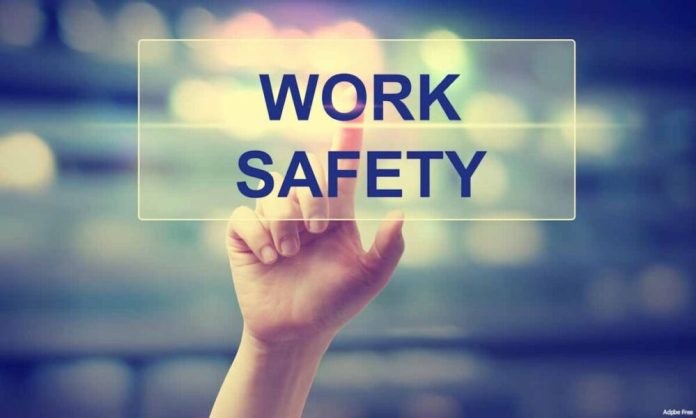The pandemic will cause a drop in non-fatal workplace accidents. Although fewer injuries at work is a good thing, employers should not relax. To prevent workplace accidents, employers must be alert and aware of what they can to do. When a business has a high number of workplace injuries, it will be known and the management will then need to take steps to protect their brand to stop customers from going elsewhere.
Too Many workplace injuriesIf they’re major incidents, such as broken bones, disability for life, or even death can have unimaginable effects on your business.
- Your brand’s reputation and your business will be damaged if you do this
- Distract employees to lower productivity
- Fewer sales if customers choose your competitors
- Finances stretched
The pain doesn’t end there. Your business could be facing expensive lawsuits or worker’s compensation claims that will take up your time and resources.
Accidents can happen at any time despite all the efforts your company makes to keep its employees safe. This article will cover how your company can prevent workplace injuries.
There will be some commonalities among the actions that led to an accident at the workplace, even though no two incidents are the same. The starting point is the documentation – rules, and policies on health and safety in the workplace.
Safety Rules and Expectations
Small businesses need not worry about finding the time or resources to develop best practices and rules for every role in their company. The Occupational Safety and Health Administration is responsible for ensuring that all employees are safe and healthy.OSHA) has a series of standards your business must follow. You can use them to create a code of conduct for your business and a health and safety program. Now that the worst is over, it’s time to move on to the next step: staff training.
Workplace safety training
All employees will require health and safety training. Include workplace safety training in your onboarding program. This is only for new employees. You will need to train your existing employees as well, so it is important that you set aside some time.
It is important that employees understand and follow the safety rules at work, even if their office does not have machinery. Any worker who is in contact with hazardous substances should know what to wear and the proper way to handle them.
A workplace safety policy outlines the procedures and requirements for training. Every employee must be trained and informed so that they understand their own responsibility in keeping themselves and others safe while at work. It is important to get your employees and possibly external visitors to sign an agreement to follow safety procedures.
Employer Liability & Workplace Negligence
You can be held responsible for any injuries that your employees may suffer in your workplace, even if there was no intent to harm them. When employees receive a settlement, they usually agree to not sue. workers’ compensation benefits.
Most workers’ compensation claims are handled through settlements with workers’ compensation carriers. This will cover any financial burdens associated with a workplace injury. You may still face lawsuits.
Employees who have been injured may take legal action to get more compensation for medical expenses, lost wages and pain and discomfort. Your business may face costly litigation if it can be proven that poor workplace safety or unsafe premises contributed to the employee’s injuries or illnesses.
Workplace Accident Response Plan

When an employee gets hurt on the job, or at the office, you may be facing different legal actions. Prepare for an injury by having first aid kits, emergency contacts and training employees in first aid.
You can minimize the extent of your injury by responding to the accident in a way that reduces the risk of further legal issues. Employers must be prepared to act when workplace accidents and safety measures are not met. Make sure that all employees have access to a comprehensive response plan.
First Responder
You can help yourself by following the steps below. respond to a potential accident Injuries at work can be a serious problem.
You can use your DRSABCD training to follow this process.
- D – check for danger and if possible remove before approaching the injured person
- R – check for a response – is the person conscious?
- S – seek help from emergency services if the accident is major
- A – clear the patient’s airways and clear them so they can breathe
- B – check breathing
- C – if the heart has stopped use CPR
- D – use a defibrillator if there is one nearby
Provide immediate medical attention to the injured employee through your company’s medical professionals. For serious injuries, call the emergency medical service or transport your worker to a doctor in your area.
Document incident
Document the incident by taking pictures, videos, or statements from people who were there. It is important to determine what happened and prevent it from happening again. As accurately as you can, record the injury.
These reports could be used by the court in case of litigation. Then, determine what caused it and take steps to prevent it from happening again. It will be necessary to take steps to prevent another incident.
Reporting
The employer is responsible for notifying OSHA about serious injuries. If they do not report the injury within the specified time period, business owners may be fined.
For the plan of action, it is always better to have a procedure in writing for both employees and supervisors.
Consult a lawyer for workplace injuries
Even if you’ve documented the injury and prepared all the necessary paperwork, it is possible that the employee could sue.
If the worst should happen and your business fails because of an incident, rebrand As soon as possible, do all you can to prevent injuries at work.


























